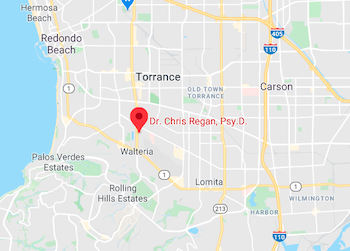Please read and print this form. It will be used in future sessions.
"I" Messages, "You" Messages: What's the Big Deal?
In our review of the communication styles, we read about how assertive communicators use "I" messages and aggressive communicators use "you" messages. What exactly does this mean?
When we use "I" messages, we are taking responsibility for our feelings, thoughts, and actions. It's as simple as using the words I, me, or my when referring to our feelings thoughts or actions. When we use the "you" message, we give responsibility for our feelings, thoughts, and actions to others.
Example One
I feel angry when I get home from work and my son has not taken out the trash as he had agreed.
"You" Message
"You make me so angry when you don't do your work. You need to do it now or you 're not going
to the movie. "
"I" Message
"I feel angry when you don't take out the trash as we agreed. I want you to do it before dinner,
or I will not allow you to go to the movie. "
In the first example, I give my son responsibility for my anger, which would also make him responsible to resolve it. I then demand his compliance using another "you" statement.
In the second example, I take ownership of my anger and address my son's behavior. This allows me to make changes for myself to resolve the anger, even if his behavior does not change. I then state the consequence if he does not follow through. Let's look at another
example.
Example Two
My spouse has agreed that she will take responsibility for taking the children to the park for the day, so I will have time to work on a special project. When it' s time to go, she announces that she has made other plans with friends today and suggests that I take the children to the zoo.
"You" Message
"Here you go again. You never do what you promise. You don't realize how much you stress me out."
"I" Message
"I feel very frustrated when you say you are not taking the children today as we agreed. It seems as if our agreements are not important to you. I'd appreciate it if you'd take the children to the park, as we agreed. "
Again, in the first message I give all responsibility for my feelings to my spouse and make a judgment statement about her behavior by saying "you never." This type of communication usually creates, rather than resolves, conflict. When I use the "I" statement, I take responsibility for how I feel and clearly state what I want or need. It may seem that changing a few words around would not make a big difference. But if we put ourselves on the receiving end, we can see which response would be less likely to make us feel hurt or defensive. We also realize that the assertive response is more effective-it works toward resolving the conflict and getting our needs met.
Now that we see how a few words can make a big difference, let's learn how to put it all together.
Now we will break it down a step at a time.
1. Many of us confuse what we feel with what we think. When we look at identifying our feelings, it's helpful to remember that feelings are described by one word - such as happy, sad, excited - and that our thoughts are described with phrases.
Examples:
I feel concerned vs. I think you're making a mistake
I feel hurt vs. I think you are trying to hurt me
2. When we look at the second part of the formula, we need to identify the specific behavior we want to address, rather than make generalized or judgmental statements.
Examples:
when you don't attend your meeting vs. when you give up on AA
when you say I am lazy vs. when you are being a jerk
3. The third area of the formula is where we focus on the impact of the behavior on a relationship. This part of the formula is optional and is best used when communicating with someone we have a close relationship with.
Examples:
because it may be a relapse sign
because it seems disrespectful
4. The fourth area of the formula is where we identify our wants or needs. Again, we use an "I" message and address the specific behavior identified in part two of the formula.
Examples:
I would like you to keep going to meetings, as your recovery is important to me.
I need you to stop calling me names and to be respectful.
Assertiveness Formula

